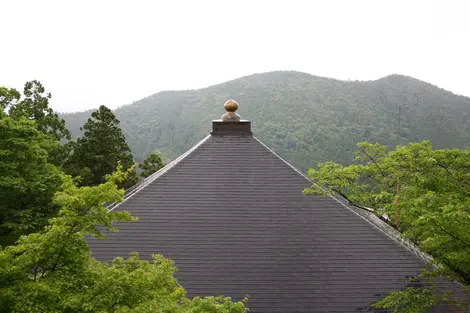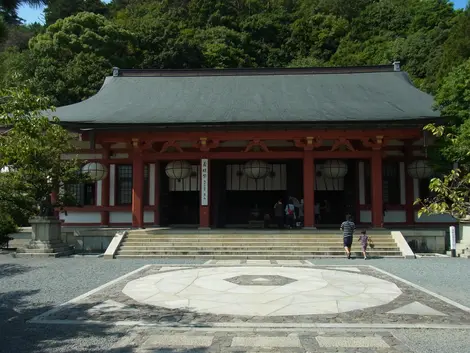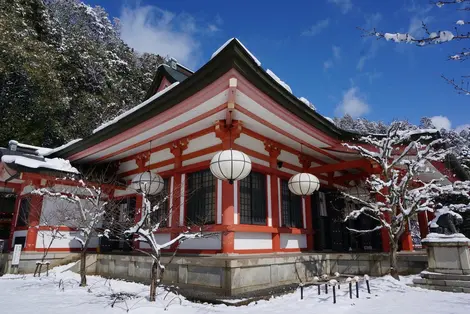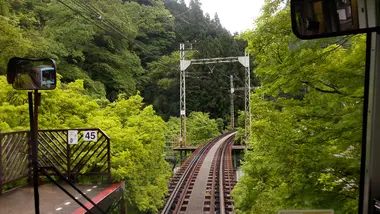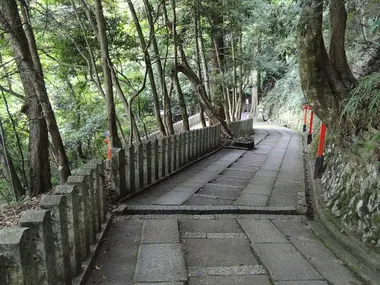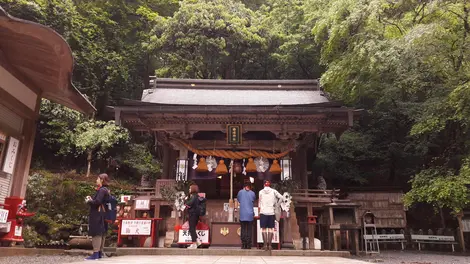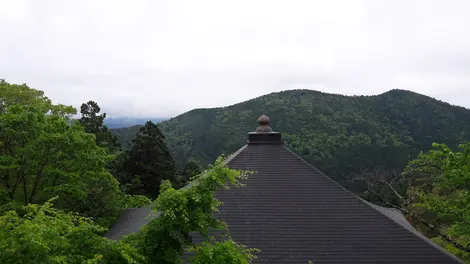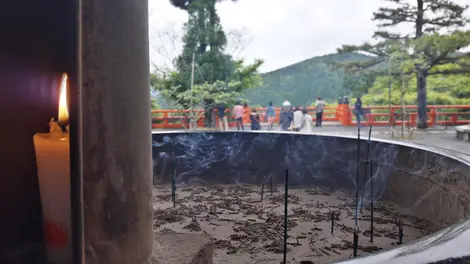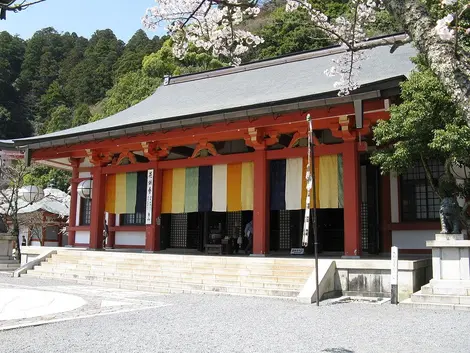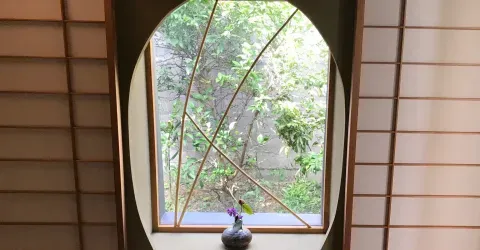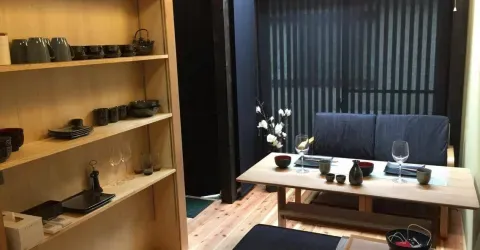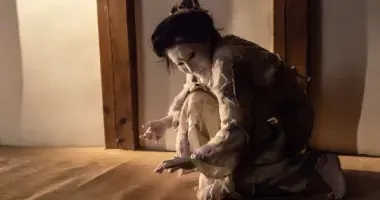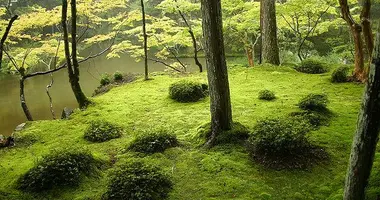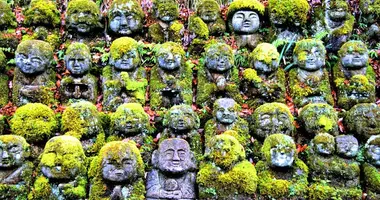Kurama-dera temple: a mystical and spiritual place north of Kyoto
Nestled in the mountains north of Kyoto, the Kurama-dera 鞍馬寺 temple is a spiritual gem steeped in mystery and history. This sacred place, founded in the 8th century, offers visitors a unique experience combining lush nature and deep spirituality. Perched on Mount Kurama, the temple attracts many pilgrims and tourists every year in search of serenity and mystical energy. From the picturesque Kurama station to the mountain summit, the path to Kurama-dera is a veritable spiritual ascent, punctuated by architectural discoveries and breathtaking panoramas. Let's plunge together into the fascinating world of this extraordinary Buddhist temple, where legends and traditions intertwine in the heart of unspoilt nature.
History and founding of Kurama-dera
Kurama-dera was founded in 770 by the monk Gantei, a disciple of the famous Chinese monk Jianzhen. According to legend, Gantei had a vision that Mount Kurama possessed great spiritual power. Guided by a mysterious white horse, he climbed the mountain and decided to establish a temple to channel this energy.
Originally a Tendai Buddhist temple, it has undergone many changes over the centuries. It has survived several devastating fires, but its treasures have miraculously always been preserved. These sacred objects, now classified as national treasures, bear witness to the site's rich history.
In 1949, Kurama-dera became independent and founded its own school of Buddhism, Kurama-kokyo. This new, syncretic doctrine blends elements of Buddhism, Shintoism and local beliefs linked to mountain spirits. This unique approach contributes to the mystical aura that surrounds the temple, attracting many practitioners in search of spirituality.
Access to the temple: a unique experience by train and on foot
The journey to Kurama-dera begins at Kyoto's Demachiyanagi station, where you take the picturesque Eizan line. This small local train, consisting of a single carriage, offers an enchanting 30-minute journey through lush green countryside. The contrast between the bustle of Kyoto and the serenity of the mountains is striking.
Upon arrival at Kurama station, the line's terminus, visitors are greeted by an imposing statue of Tengu, a mythical long-nosed creature who is the benevolent guardian of the area. From here, pilgrims have two options: take the funicular for a quick ascent, or opt for a more authentic hike on foot.
The walk to the temple, although relatively short (around 45 minutes), can be a little steep in places. However, it offers total immersion in the surrounding nature, and allows you to gradually immerse yourself in the spiritual atmosphere of the place. The path is lined with red lanterns, bridges and streams, creating an enchanting atmosphere conducive to meditation.
The ascent to Kurama-dera: a path imbued with spirituality
The ascent to Kurama-dera is much more than a simple hike; it's a truly spiritual journey. The path begins at the majestic Niomon Gate, guardian of the entrance to the sacred domain. Shortly afterwards, visitors discover the Yuki-jinja Shinto shrine, remarkable for its thousand-year-old cedar tree.
As you ascend, the atmosphere takes on a palpable mystical energy. The winding paths pass through a dense forest of hundred-year-old cedars, whose imposing roots sometimes form strange interlacing patterns on the ground. This phenomenon, known as Kinone Michi, is considered a spiritual training ground by some practitioners.
Along the way, several small temples and shrines invite meditation and contemplation. Each step brings the pilgrim closer to spiritual enlightenment, in the image of founder Mikao Usui, who is said to have received the revelation of Reiki here. The pure mountain air, laden with the scent of cedar and incense, creates an atmosphere conducive to introspection.
Architecture and temple treasures
The Kurama-dera complex, perched on a mountainside, impresses with its architecture harmoniously integrated with nature. The main building, the Honden, rebuilt in 1971, dominates the complex, offering panoramic views over the valley and surrounding mountains.
Among the temple's treasures are precious Buddhist statues, miraculously preserved from fires over the centuries. These sacred objects, classified as national treasures, bear witness to the site's rich artistic and spiritual history. Although the original objects of worship are rarely displayed to the public, replicas allow us to appreciate their beauty and symbolism.
A particularly noteworthy architectural feature is the Sekurabe Ishi, a sacred stone located near the summit. Legend has it that this stone has miraculous properties and is linked to the story of Minamoto no Yoshitsune, the famous samurai who stayed at Kurama-dera in his youth. Nearby, the Okunoin Mao-den, the mountain's most sacred shrine, is said to mark the exact spot where the deity Mao-son descended to Earth.
The divine triad of the Kurama-dera: a unique Buddhist approach
At the heart of the Kurama-dera teachings lies a unique divine triad, known as Sonten. This trinity is made up of three major deities: Bishamonten, Senju Kannon and Mao-son. Each of these deities represents a fundamental aspect of the universe and spirituality.
Bishamonten, patron deity of the North, symbolizes Light and Wisdom. Senju Kannon, bodhisattva with a thousand arms, embodies Love and Compassion. Finally, Mao-son, a Kurama-dera deity, represents Power and Life Force. According to local belief, Mao-son came from the planet Venus 6.5 million years ago to guide mankind.
This divine triad is at the heart of the temple's daily rituals and prayers. Devotees recite a special invocation to the Sonten, asking for guidance, protection and spiritual enlightenment. This syncretic approach, blending elements of Buddhism, Shintoism and cosmic beliefs, gives Kurama-dera its unique character and mystical aura.
Activities and attractions around Kurama-dera
A visit to Kurama-dera can be part of a day rich in discovery. After exploring the temple, visitors can continue their hike to the charming village of Kibune, on the other side of the mountain. The hour-long hike takes in beautiful forest scenery and leads to the Kibune-jinja shrine, renowned for its oracles.
In summer, Kibune is famous for its restaurants on stilts above the river, where you can enjoy nagashi sômen, fine noodles caught in an artificial bamboo stream. This unique culinary experience is particularly appreciated for its freshness on hot summer days.
For those seeking relaxation after their spiritual visit, the Kurama Onsen, located near Kurama station, offers open-air thermal baths with a splendid view of the mountains. It's the perfect opportunity to recharge your batteries while enjoying the benefits of natural hot springs.
Kurama-dera through the seasons: a year-round destination
Kurama-dera offers an ever-changing and enchanting spectacle through the seasons. In spring, cherry blossoms adorn the site in a delicate pink veil, creating an enchanting atmosphere. In summer, the cool forests and babbling brooks provide a welcome refuge from the heat.
Autumn is particularly spectacular, with the maple trees taking on flamboyant colors, transforming the mountains into a palette of reds and golds. It's also at this time of year, on October 22, that the famous Kurama no Hi Matsuri festival is held, an impressive fire festival where giant torches are carried through the streets of Kurama.
Winter, though quieter, offers a serene beauty when snow covers temple roofs and cedar branches. Whatever the season, Kurama-dera invites you to take a meditative break from the hustle and bustle of the city. To take full advantage of this unique experience, simply book a vacation rental in Kyoto with Japan Experience and consider the JR Pass for free train travel. You'll be able to explore the Japanese countryside around Kyoto with one of our travel angels, and enjoy an unforgettable experience at the heart of Japanese spirituality.
Address, timetable & access
Address
Access
9 a.m. to 4:30 p.m



